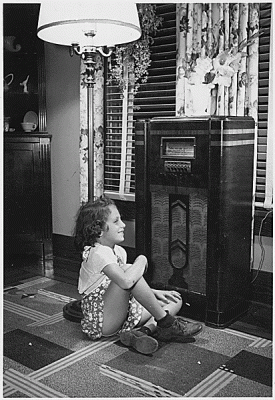Editor’s note: Mike Agovino is the Co-founder and Chief Operating Office of Triton Digital, a leading provider of applications, services and content to the media industry, specifically radio, with more than 7,000 station affiliations. Agovino has more than 25 years of executive experience, having served as President of Katz Radio and Katz Interactive, COO of Clear Channel Radio Sales, and co-COO of Interep National Radio. He has been a recognized innovator in the industry operating at the intersection of broadcast and new media.
Since Pandora’s IPO a year ago, the online audio story has been something of a broken record. Pure play audience numbers keep growing (Pandora’s audience more than doubled from April 2011-April 2012) but the revenue growth trajectory, while steep, has yet to produce profitability. This is because – unlike the traditional radio world – audience is expense for online radio with a hefty performance royalty that mounts each time a consumer listens to a song. Dramatic increases in mobile and in-car listening will only continue to skyrocket the tally as we move forward.
This catch 22 has slowed the shift to digital for traditional radio stations. For nearly a century now broadcast radio has operated without a performance royalty. However, these same brands face oppressive performance royalty fees from their online listenership. To date, it has been impossible for online music plays, whether they be from a pure play or a broadcaster, to turn a profit. So what motivation does a local station have for streaming its content?
The “Threat” of Digital
A year ago, I wrote an article titled “Radio and Records: Can’t We All Just Get Along?” In it I discussed how traditional radio stations see digital radio as the competition rather than an asset they can put to use. This sentiment largely stems from digital-only music providers such as Pandora, MOG, Spotify and the countless other digital services out there that, in fact, should be considered competition. Digital-only music providers are rightfully perceived as a threat to traditional radio because they are providing a service that listeners desire – the ability to listen to the music they love with more choice and control and less advertising across a variety of devices that have become indispensable utilities.
The key to turning digital from a threat to an opportunity for traditional radio providers is taking the things that stations do best – such as music curation, artist access, events, promotions, and building a sense of community around localized services – and delivering them into the digital channel, wrapped in a great user interface. The challenge has always been how to get a return on any such investment in the face of the royalty structure.
But it seems that may be changing.
Embracing the Digital Future
Clear Channel, the largest radio company in the U.S. with around 850 stations has just shifted the royalty dynamic and led the way for traditional radio providers looking to go digital. The company this week announced a partnership with Big Machine Label Group that, for the first time, has its traditional radio stations paying over the air as well as online performance royalties in a revenue sharing arrangement. The exact details of this agreement were not disclosed but my assumption would be that it must include a participation level above and beyond anything presented historically by any of the broadcasters or industry trade organizations to have gained traction with a label.
In most industries you wouldn’t expect the largest player to make this bold a move. However, Clear Channel has been playing the innovator for longer than most will give it credit for, especially in the days since Bob Pittman came in. Clear Channel has nearly doubled its online audience in the past year and has promoted its iHeartRadio application (iPhone) on-air with great frequency.
With many of the highest rated and largest billing music stations in its portfolio, you could say Clear Channel has more to gain and more to lose than anybody else, but either way they have made a move. Whether it’s a “test” that rolls slowly or the first of many trees to fall remains to be seen. Will others chase? I, for one, hope so.
Staying relevant is an innovate-or-die battle. Traditional radio is not dead, but its future is inextricably tied to digital. And the key to making it online is working with the music industry to make that digital future a reality – sooner rather than later.
